#Jahangir
Explore tagged Tumblr posts
Text


Genshin Impact | 2024 Birthday Artworks & Character Shorts: Layla
Download Link (Google Drive)
#genshin impact#birthday artworks#birthday shorts#2024 birthday shorts#character artworks#layla#jahangir
170 notes
·
View notes
Text



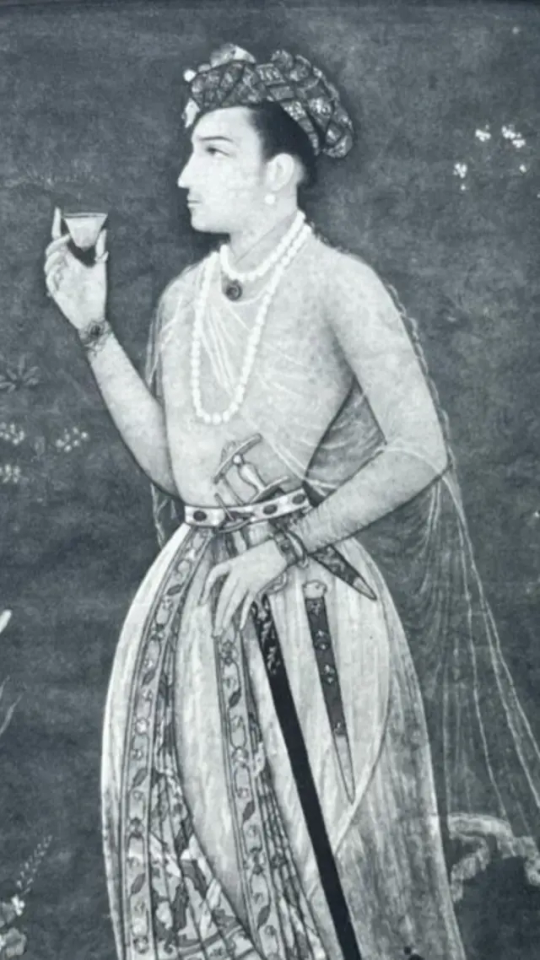





a few mid timurid dynasty (akbar-aurangzeb) prince serves ... .they hate to see you in a gorg brightly colored outfit before ur mustache has even grown in ... I wish falconry was a global phenomenon in the year 2024
#art history#medieval art#medieval history#medieval manuscripts#early modern art#mughal history#mughal empire#mughal art#akbar i#jahangir#shahryar mirza#dara shikoh#shah jahan#aurangzeb#murad bakhsh#jai singh i#maybe other guys i forgot also#fashion history#timurid dynasty
32 notes
·
View notes
Text

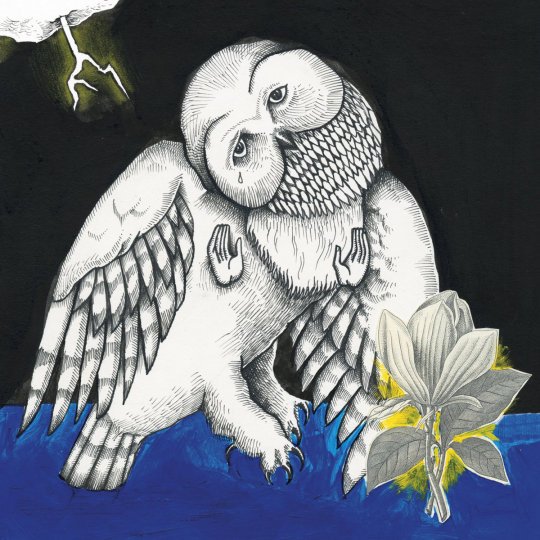

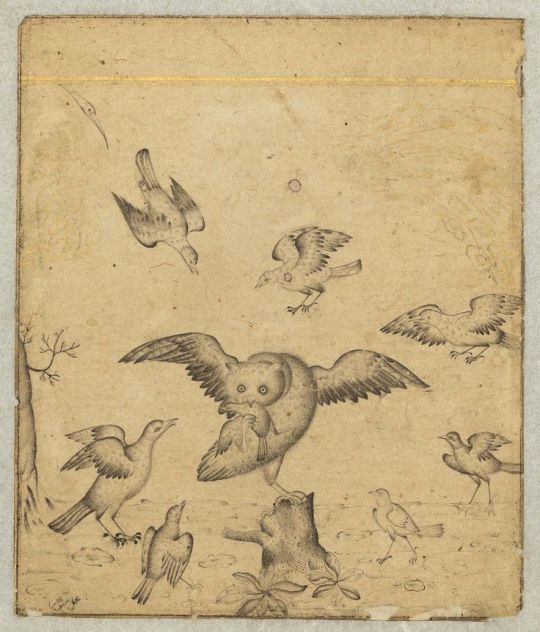



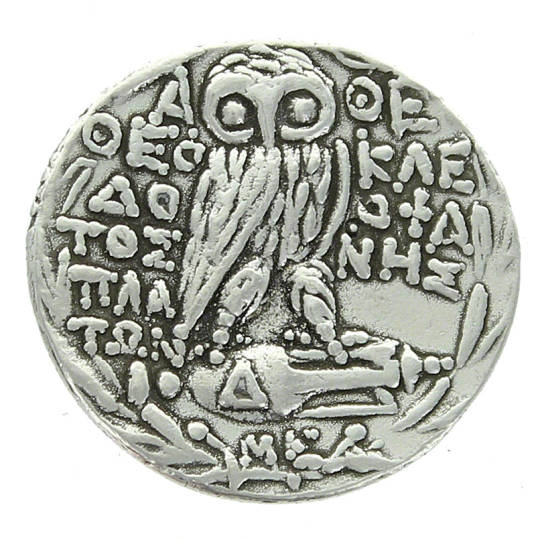

owling. . .. jason molina .. central asian owl bad omen conceptions.. killing the owl gaining legitimacy .. but the owl is urself. .. the owl is a self sabotaging possessions.. positive owl symbolism .. the owl is very wise .. it can see a lot (blessing or curse?) .. the owl love lowkey killing you but it's good also? Let me yap ..#ITSOWLTIME
#owls!#owl#art#bird art#owl art#greek coinage#ancient greece#mughal art#jahangir#persian art#jason molina#songs ohia#magnolia electric co#album art#the mountain goats#tmg#miniature painting
7 notes
·
View notes
Text
“Nothing about the calamitous circumstances of Noor Jahan’s birth ... could have predicted the extraordinary and glorious career she was to have in the most glittering court in the world.
Noor Jahan is born in a caravan, outside the town of Kandahar, as her parents flee poverty and persecution in Tehran to seek their fortune in the rising Mughal court of Akbar in Hindustan. Her parents, Asmat Begum and Mirza Ghiyas Beg, are from a noble Persian family and the child Mehr-un-Nisa is given a thorough education in the Persian arts and letters. The educated, cultured Ghiyas Beg obtains a modest mansab of 300 horse at Akbar’s court at Fatehpur Sikri, which already counts numerous other Persian immigrants in attendance. At seventeen, Mehr-un-Nisa is given in marriage to Ali Quli, a Persian mercenary, who obtains some measure of fame as an excellent shot at the court of Salim Mirza, the future Jahangir, and is given the title Sher Afghan, killer of tigers. Mehr-un-Nisa learns how to hunt and shoot with her husband and gives birth to a daughter, Ladli, in 1605. Three years later, at the age of thirty, Mehr-un-Nisa is widowed. Mehr-un-Nisa and Ladli are taken into the household of the Mughal court, where Jahangir is now padshah. Her father has been awarded the title Itimad-ud-Daulah, ‘Pillar of Government’, and is Jahangir’s revenue minister while her brother, Asaf Khan, is an increasingly influential nobleman of the court. Mehr-un-Nisa is taken into the entourage of Ruqayya Begum, Akbar’s senior-most surviving widow, a childless woman, to whom she is a steady and cherished companion. ‘This Begam,’ writes a Dutch cloth merchant, Van den Broecke, about Ruqayya, ‘conceived a great affection for Mehr-un-Nisa; she loved her more than others and always kept her in her company.’ It is an established custom at the Mughal court that the padshah must protect all the widows and dependent members of those who have served him, and this tradition adds to the ever-growing number of women, children, and retainers in the Mughal zenana. In the imperial zenana, Mehr-un-Nisa has the close companionship of her family, especially her beloved parents, and the enormous network of zenana women.
“...it is in the meena bazaar in 1611 that Jahangir, now a respectable forty-two years old, sees Mehr-un-Nisa with Ruqayya Begum. Jahangir would have known who she was, since Mehr-un-Nisa’s father and brother are already valued members of his entourage, so the circumstances of her family and widowhood are known to him. Speaking to her, Jahangir is now seduced by the beauty, grace and charm of this thirty-four-year-old widow and within two months Jahangir has married her and Mehr-un-Nisa has become Noor Mahal, ‘Light of the Palace’, in a mirroring of Noor-ud-Din, Jahangir’s own title, ‘Light of the Faith’.
Noor Mahal will be Jahangir’s last legal wife and by 1616, she has become Noor Jahan, ‘Light of the World’. They never have any children together and, indeed, by the standards of the day, Noor Jahan is a mature woman, but for the next sixteen years of his life Jahangir will never again search for distraction in a younger wife’s charms. He has always been nurtured and cherished by a coterie of older women—Gulbadan, Haji Begum, Salima Sultan, Hamida Banu and his own milk mother—and in Noor Jahan Jahangir finds a felicitous blend of comforting, reassuring care and a woman with enormous talent, charisma and ability. Noor Jahan shares Jahangir’s aesthetic sense and contributes in many ways to the expansion of his imperial vision and legacy. Within a few years, Noor Jahan is issuing royal farmans signed with her own seal, having gold coins struck in her name, engaging in trade and has a series of magnificent buildings constructed through the breadth of the empire. Exceptionally for a woman, drums are beaten before her advance and ‘sometimes she would sit in the balcony of her palace, while the nobles would present themselves and listen to her dictates’. Noor Jahan’s family, already influential, further prospers as she becomes more powerful. Itimad-ud-Daulah, temporarily disgraced because of charges of embezzlement, which a contemporary writer sarcastically notes when he says that ‘in the taking of bribes he certainly was most uncompromising and fearless’, is reinstated. Asaf Khan, Noor Jahan’s brother, is honoured with the gift of one of Jahangir’s special swords, the Sarandaz, ‘Thrower of Head’, and the atmosphere at the Mughal court becomes conducive to an increasing influx of Persian talent. Where once the Atka Khail and Chagatai reigned supreme, and then the Rajputs, the Persians now are increasingly powerful. But it is in conducting international trade that Noor Jahan is exceptionally successful and the quantum of wealth this creates for her gives Noor Jahan the financial reach to sponsor buildings, offer gifts, organize marriages and entertainments, and sponsor charity, on a scale rarely seen before in a Mughal woman.
“...As for Noor Jahan, her trade with the English is only a small part of her commercial activity. She owns and rents trade ships and trades with the Dutch and the Portuguese, in addition to the English. She collects duties at Sikandarabad on goods coming from Bhutan and Bengal, raw silk, spikenard, borax, verdigris, ginger and fennel, and invests specifically in the commerce of indigo and embroidered cloths. ‘The officers of Noor Jahan Begum, who built their Sarai there,’ clarifies a Dutch merchant, Francisco Pelsaert, ‘collect duties on all these goods before they can be shipped across the river, and also on innumerable kinds of grain, butter, and other provisions, which are produced in the eastern provinces.’ She begins her construction activities as early as 1616, when she spends 200,000 rupees on the Noor Manzil gardens in Agra. She also invests in infrastructure which helps in the smooth functioning of her trade routes. In 1620, following a proclamation from Jahangir for mileage towers, kos minars, to be built along all major highways in a bid to ensure safe travel in the empire, Noor Jahan builds a monumental caravanserai outside Agra called the Serai Noor Mahal. While many caravanserai were built during the reign of Jahangir, the Serai Noor Mahal is particularly magnificent, reflecting the wealth and splendour of its patron. It has large carved gateways, compartments for travellers, a bathhouse and a mosque. Two thousand travellers at a time, along with their camels and horses, can camp inside the serai at no expense. In the serai there are ‘servants, entrusted with the preparation of the food for guests, as well as doing all the other duties essential to comfort within the house, even to providing hot water for washing the feet’. All one has to do, specifies Manucci, is send for food from the nearby bazaar, since all other needs are met. ‘If the guests have horses,’ moreover, the servants ‘are required also to cook mung or chick pea, which is given instead of the barley we feed such animals in Europe.’ All this is done for just a small coin, which Manucci marvels at, admiring the servants’ work ethic when he says that ‘uncivilized and heathens though they are, they surpass our stable men and innkeepers of Europe’ who apparently are much more voracious in their fees. At night, the huge gates to the serai are slammed shut and bolted, to guard against thieves and brigands. The guard shouts out a warning to all the travellers, to guard their belongings, picket their horses by the leg and stay vigilant against wild dogs ‘for the dogs of Hindustan are very cunning and great thieves’. While most of the serais in the Punjab are relatively pedestrian, made from bricks, the Serai Noor Mahal is made from red sandstone, brought at great expense from the quarries at Fatehpur Sikri more than 300 miles away. The serai is decorated with traditional Islamic arabesques, but also with the Tree of Life and the flower pot of Persian iconography and elephants, peacocks and human figures reflecting the influence of Hindu art. There is also an inscription on the serai that proudly announces the name of the patron, the ‘angel-like Noor Jahan Begum’ so that all the traders and travellers on this lucrative trade route between Agra and Lahore are reminded of the power and compassion of the Mughal shahzaadi.
The trade, revenues collected and exorbitant gifts offered to the queen make Noor Jahan an exceedingly wealthy woman. In 1622, upon the death of her father Itimad-ud-Daulah, Jahangir awards the entire estate of this fabulously wealthy man to Noor Jahan, completely bypassing the dead man’s son, Asaf Khan. Noor Jahan is now the wealthiest woman in the Mughal empire and, arguably, in the world. Indeed Pieter van den Broecke, a Dutch cloth merchant, remarks that at the time of Jahangir’s death in 1627, Noor Jahan had amassed wealth ‘more than that left by the King’ himself. Jahangir himself had dazzling amounts of wealth which Hawkins estimated at half a billion rupees, a clearly inflated figure, but nonetheless a reflection of the visible opulence of the Mughal empire.
...Noor Jahan continues to be a dominant player in court politics and is also capable of being a talented and constant companion to Jahangir in all his activities. She is by his side in Ajmer when he participates at the urs at Moinuddin Chishti’s shrine. Jahangir has a large cauldron made in Agra and brought to Ajmer during the saint’s death celebrations. The padshah ‘ordered them to cook food for the poor in that pot, and collect together the poor of Amir to feed them whilst I was there’, Thomas Coryat, an English traveller, is surprised to note. He also observes Jahangir ‘kindling a fire with his own hands and his Normahal under that immense…brasse-pot, and made kitcherie for 5000 poor, taking out the first platter with his own hands and serving one; Normahal the second; and so his ladies all the rest’. Noor Jahan often accompanies him on the hunt, which Jahangir is very fond of, and excels at it. She understands his flamboyant need for entertainment as distraction from his many ills and occasional bad humour and organizes the most resplendent feasts. Even to the details of her involvement in embroidery design, clothing and jewellery, she demonstrates a fine taste which reflects Jahangir’s. Noor Jahan loves the colour white, and favours clothes in paler colours, as opposed to the more riotous tastes of the Rajput and other Hindu wives. She invents the farsh-e-chandani, a spreading of snow-white sheets instead of carpets in a room. She also invents the dodamni, a light cloth weighing two dams, and the pachtoliya, a cloth weighing five tolas, as a head covering for women, the high Turkish hats having long disappeared from the Mughal court. Jahangir too is an aesthete and passionately interested in the clothes and jewellery worn at the court. All his clothes are designed expressly only for him, and he wears them just once. Certain textiles and garments are reserved solely for his use and no courtier may use them. He introduces the fashion of embroidery on the collar and the hems of the long sleeves of the qaba. He also starts the fashion for earrings for men when in 1615, after a recovery which he believes he owes to Moinuddin Chishti, he has pearl earrings made which signified that he was a slave of Moinuddin. All the nobles and courtiers immediately do the same and now it is de rigueur for the elegant men of the Mughal court to wear earrings. Even Asmat Begum, Noor Jahan’s mother, contributes to the elegance of the courtly life by making perfumes. The Mughals love perfumes, having a visceral hate for the sweat that is provoked by the intolerably hot climate of Agra and Delhi. They bathe frequently and change their clothes every day, casting off their day-old clothes, handing them on to their servants. Incense is burned throughout the day through the rooms of the zenana and fresh flowers are brought in from the flower gardens to perfume the rooms. Chameli, mogra, champa, nargis, harsinghar gulab, kamal and malti are some of the flowers grown in the palace gardens and scent is also extracted from these flowers. One day, while Asmat Begum is making rose water, she finds that a scum is formed on the top of this hot concoction and that by collecting the scum bit by bit, she is able to gather a potent oil of such strength ‘that if one drop be rubbed on the palm of the hand it scents a whole assembly and it appears as if many red rosebuds had bloomed at once’. Jahangir is delighted by this perfume, which Salima Sultan tactfully names Itr-e-Jahangiri. ‘It restores hearts that have gone,’ exclaims the jaded padshah, ‘and brings back withered souls’. Noor Jahan and her talented family surround the emperor with beauty and elegance and it is not surprising that according to the eighteenth-century biographer Shah Nawaz Khan ‘the emperor used to say that until she came to his house, he had not understood domestic pleasures or the spirituality of marriage’.
... Noor Jahan is now at the height of her power and influence at the Mughal court. Her family have also become immensely successful, marrying into the Persian nobility and gaining steady promotions under Jahangir, none more so than Itimad-ud-Daulah. As early as 1617, Jahangir honours him ‘as an intimate friend by directing the ladies of the harem not to veil their faces before him’. There are very few men, apart from the padshah, his young sons and the eunuchs, who are allowed to visit the women of the zenana when they are without their veils so this is a high honour indeed. Itimad-ud-Daulah is appointed prime minister and granted a flag and a drum and, as a special favour, is permitted to sound his drums in the royal presence. In 1619, as part of elaborate Navroz celebrations, Itimad-ud-Daulah presents to Jahangir a magnificent throne, made by a Frenchman and erstwhile counterfeiter of precious stones. Augustin Hiriart is hired by Jahangir for his skill in making beautiful, jewelled objects, and at the Mughal court he is renamed Hunarmand from the Persian hunarmandi or skilful. The throne that Hunarmand has created takes three years to build and costs a staggering 450,000 rupees and Jahangir is well pleased. Jahangir is able to delegate most matters to his talented wife while he occupies himself with the matters that interest him the most: the beauty of the natural world, his ateliers with their painters of miniatures and the aggrandizement of the imperial image through the visual arts. Jahangir consults Noor Jahan, Itimad-ud-Daulah or Asaf Khan on most matters and the biographer Shah Nawaz Khan agrees that ‘the disposal of the affairs of the kingdom were in her hands’. Such is her power that ‘except for the khutba not having been read in her name, she exercised all the prerogatives of royalty’. The farmans she issues are wide ranging and numerous, similar in scope to Jahangir’s edicts. Moreover, whereas the earlier Mughal women such as Hamida Banu and Harkha Bai had simply had their names written on their seals, Noor Jahan’s seal on her farmans reads; ‘By the light of the sun of the emperor Jahangir, the bezel of the seal of Noor Jahan the Empress of the age has become resplendent like the moon.’
In 1621, Asmat Begum, Noor Jahan’s mother, dies and Itimad-ud-Daulah is devastated. Within three months of his wife’s death, Itimad-ud-Daulah dies too and for Noor Jahan, this is a shattering loss. She inherits all of her father’s riches and becomes fabulously wealthy but she acquires two powerful new enemies. In the next few years, as Jahangir becomes increasingly ill, his body faltering under the years of assault from wine and opium, various factions across the empire swirl and coalesce together to stake a claim for the Mughal throne. Asaf Khan’s daughter, the young Arjumand Banu has been married for ten years to Khurram Mirza, now Shah Jahan. Disinherited from his own father’s fortunes and wary of his sister’s ambition for her daughter Ladli Begum, Asaf Khan aligns himself with his son-in-law. Noor Jahan, meanwhile, has married Ladli Begum to the youngest of Jahangir’s sons, the handsome but imbecilic Shahriyar. The unfortunate Khusrau is given over to the uncertain care of Shah Jahan, who soon has him murdered, for the Mughal empire has now become worth killing for. The days when Babur encouraged his sons to get along with each other are long gone. There are betrayals and alliances and flickering violence. Noor Jahan enters the fray gallantly, at one point riding on elephant-back to rescue her beleaguered husband, who is practically being held prisoner by his erstwhile faithful retainer, Mahabat Khan, and his army of 5,000 Rajputs, because of the high-stakes intrigues surrounding Jahangir’s sons. But Shah Jahan has gathered a huge following during his years on campaigns for his father and upon Jahangir’s death, in 1627, he becomes Padshah Ghazi of the Mughal empire. Noor Jahan, vanquished, retires to Lahore with Ladli Begum, who is soon widowed when Shahriyar is murdered upon the orders of Shah Jahan. Mother and daughter live in quiet retirement and Shah Jahan decrees a generous yearly allowance of 200,000 rupees for Noor Jahan. All other signs of Noor Jahan’s influence and power, however, are meticulously erased. He bans the use of Noor Jahan’s gold coins, under pain of death, and has all her coins melted. Her royal drums fall silent and the imperial elephants are no longer hers to command. Noor Jahan displays the same grace and dignity in retirement as she did when she was Padshah Begum of Hindustan. She dies eighteen years later, and steps into immortality as the most charismatic and influential of the Mughal queens. But before her death, Noor Jahan creates one last piece of art—the ultimate reflection of her flawless aesthetics and her visionary and unique artistic expression. She builds a tomb, from her own funds, for her parents at Agra called Itimad-ud-Daulah’s tomb, which is so beautiful it will be used as an inspiration for a later, more famous, monument to love.
... Noor Jahan owed her meteoric rise to power to her status as the wife of the padshah. From the time that Jahangir dies, her powerful charisma vanishes, like dew on the misty mornings in her flower gardens at Agra. It is poignant that the most ephemerally beautiful and enduring monument Noor Jahan builds is not to the memory of Jahangir, but to her beloved parents, whose warm abiding presence was the bedrock upon which she built her legacy. Noor Jahan will spend eighteen years in charmless obscurity in Lahore, and it will be a galling reality to a woman who once commanded ships and ambassadors. As Shah Jahan settles into Agra and makes it the imperial capital, Noor Jahan may have taken some comfort from the fact that he was circled by a luminescent series of buildings, the Noormahal Serai, the Noor Afza gardens with their pleasure pavilion and, further away, Itimad-ud-Daulah’s tomb, all built through the wealth and the grace of her patronage.”
- Ira Mukhoty, “Daughters of the Sun: Empresses, Queens and Begums of the Mughal Empire”
25 notes
·
View notes
Text

17th-century Tomb of the Mughal Emperor Jahangir in Lahore, Pakistan
British vintage postcard, mailed in 1908 to Paris
#pakistan#british#sepia#century#photography#jahangir#17th-century#vintage#mailed#postkaart#mughal#paris#ansichtskarte#ephemera#carte postale#postcard#17th#postal#lahore#briefkaart#emperor#photo#1908#tomb#tarjeta#historic#postkarte
6 notes
·
View notes
Text

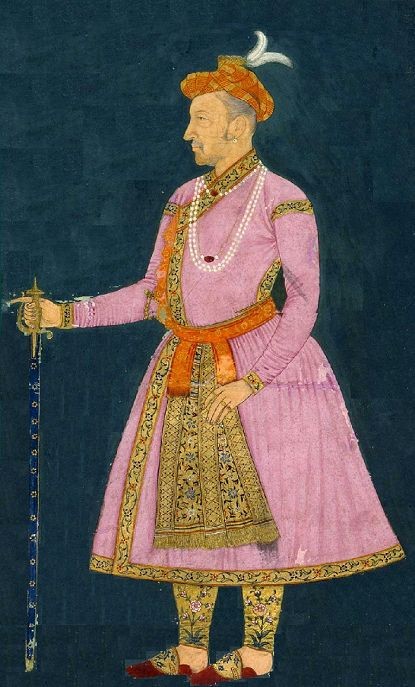
often the Mughal Emperors are shown with a ethnic look of Aryans/Central Asians but this depiction has many loop holes.
Mughals were claimed to have roots from Persian Mughals of Turkic-Mongol region. Even they have been risen from Timurid Dynasty hailing from Central Asia.
They had a more of Mongolian face cut.
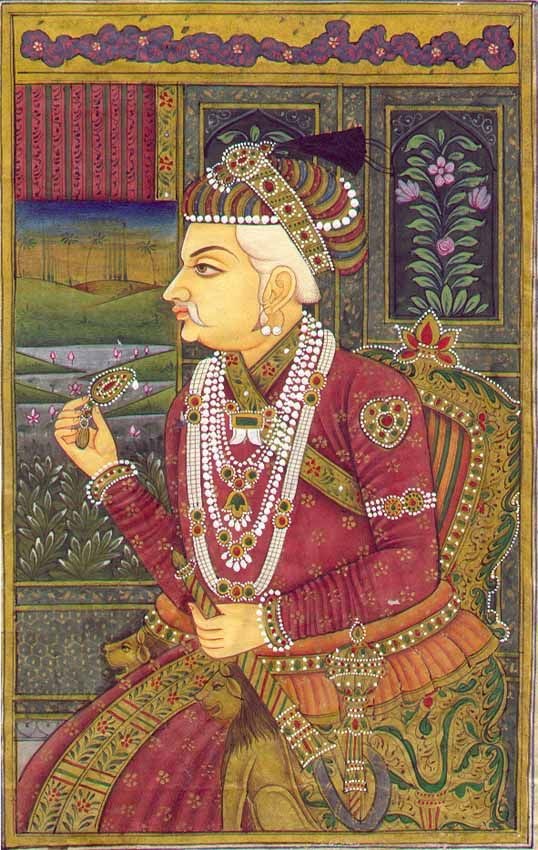
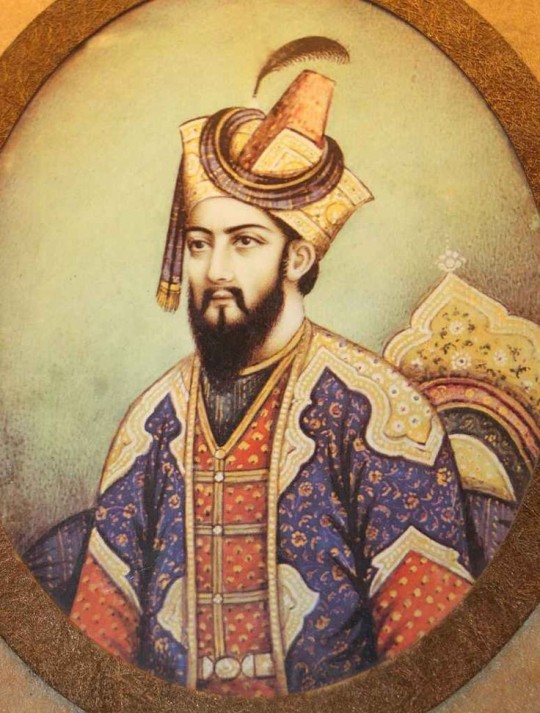
13 notes
·
View notes
Text

#designer#download#logodesign#vectors#icondesign#symboldesign#vectorart#design#icon#symbol#shape#shapes#graphic#tshirtdesign#tshirtdesigner#floraldesign#mandala#patterndesign#artdesign#jahangir#jahangiralam#jahangiralam0#idcarddesign#idcard#visitingcarddesign#visitingcard#bookcoverdesign#bannerdesign#businesscarddesign#banner
1 note
·
View note
Text
Celebrating Nur Jahan’s Patronage in Art and Architecture
#architecturalheritage#badshahisadak#Built heritage#conservationarchitect#Cultural Heritage#echoesoftime#exploreindia#femaleroyalfigures#grandtrunkroad#hamam#heritageofagra#heritageofIndia#heritageofpunjab#heritageofuttarpradesh#Historic sites#History#historyofindia#historyofjalandhar#historyofmughalempire#historyofpunjab#Jahangir#jalandhar#Mehr-un-Nisa#mosque#mughalarchitecturalstyle#mughalarchitecture#Nurjahan#Nurmahal#nurmahali#nurmahalidress
0 notes
Text
Review Corner | The Twentieth Wife
I thought based on the premise, that it would be an interesting novel to read. Harems, court politics and political intrigue have always fascinated me — I have read several light novels (say like The Apothecary Diaries) set in China and Japan to that effect where women take charge of the narrative and spin their destinies to Asian-set fantasies involving strategies and gods (such as Strike The Zither and Daughter of the Moon Goddess).

If you don’t know what I am talking about, the following is the description of the book from Goodreads.
Goodreads Description
An enchanting seventeenth-century epic of grand passion and adventure, this debut novel tells the captivating story of one of India’s most legendary and controversial empresses — a woman whose brilliance and determination trumped myriad obstacles, and whose love shaped the course of the Mughal empire.
She came into the world in the year 1577, to the howling accompaniment of a ferocious winter storm. As the daughter of starving refugees fleeing violent persecution in Persia, her fateful birth in a roadside tent sparked a miraculous reversal of family fortune, culminating in her father’s introduction to the court of Emperor Akbar. She is called Mehrunnisa, the Sun of Women. This is her story.
Growing up on the fringes of Emperor Akbar’s opulent palace grounds, Mehrunnisa blossoms into a sapphire-eyed child blessed with a precocious intelligence, luminous beauty, and a powerful ambition far surpassing the bounds of her family’s station. Mehrunnisa first encounters young Prince Salim on his wedding day. In that instant, even as a royal gala swirls around her in celebration of the future emperor’s first marriage, Mehrunnisa foresees the path of her own destiny. One day, she decides with uncompromising surety, she too will become Salim’s wife. She is all of eight years old — and wholly unaware of the great price she and her family will pay for this dream.
Skillfully blending the textures of historical reality with the rich and sensuous imaginings of a timeless fairy tale, The Twentieth Wife sweeps readers up in the emotional pageant of Salim and Mehrunnisa’s embattled love. First-time novelist Indu Sundaresan charts her heroine’s enthralling journey across the years, from an ill-fated first marriage through motherhood and into a dangerous maze of power struggles and political machinations. Through it all, Mehrunnisa and Salim long with fiery intensity for the true, redemptive love they’ve never known — and their mutual quest ultimately takes them, and the vast empire that hangs in the balance, to places they never dreamed possible.
Shot through with wonder and suspense, The Twentieth Wife is at once a fascinating portrait of one woman’s convention-defying life behind the veil and a transporting saga of the astonishing potency of love.
My Review
But what do I even say…
Two of the worst people you know fall in love based on 3–4 meetings. A son who poison’s his dad, a daughter who eyes the throne first before the man seated in it, their unrivaled obsession with each other without any actual substance like they have a proper conversation for the first time after like 20 years of pining- leading to intentionally or not, many people’s death.
I think history conveniently forgets to teach us that these so called Great Emperors were often terrible people. Maybe I expected more from the Jahangir written in the book — but it was certainly not this — hero material. In here, I am criticizing the characters of the novel — maybe Mehrunnisa didn’t actually love Salim but actually coveted the throne? That may have created a much more impactful story line — because honest to god, their love was not at all convincing.
I have to grudgingly give credit where due as well — the author has indeed relied on historical accounts, decorated with her imagination — but for a novel — I felt I could not understand why Mehrunnisa and Salim loved each other — they barely knew each other and even if we categorize her interest in him to be love (and craving for power in a world where women didn’t have any) he barely looked at her 4 times — and purely out of lust. Literally till the last moment — he just wanted to possess her. It felt as if the author lined out all the historical events we knew — and then tried to fill in gaps — create justifications for actions resulting in a colorful patchwork where I could tell which aspects were derived from history and which were not — breaking the illusion of the novel.
While this could be true — in the sense of history — the characters ended up unlikable. Not much fault can be rested in the author in that sense.
But if I have to read about — ‘breasts heaving’, ‘trimmed waist’, ‘looked as young as the day of marriage’ — even in novels set in serious historical backdrops, I will no doubt harm a book or someone.
#book#book review#review#mughal#mughal empire#jahangir#mehrunnisa#nur jahan#historical fantasy#historical#literature#indian writers#review corner#the twentieth wife
1 note
·
View note
Link
Jahangir was a Mughal emperor of India who ruled from 1605 to 1627, known for his military campaigns and architectural projects. He was a patron of arts and culture, and his reign marked a golden age in Indian history.
Link: Jahangir
0 notes
Text

#sign#bilingual#English-Urdu#hunting resort of the Emperor Jehangir#Jahangir#Hiran Minar#Sheikhupura#Pakistan#Mughal architecture
0 notes
Photo

artworks by Amaan Jahangir
#Amaan Jahangir#art#illustration#arrow#knight#armor#mood#texts#imessage#art direction#text message#artwork#u
876 notes
·
View notes
Text



Kalank (2023)
#kalank#pakistan#tv show#hira mani#junaid khan#nazish jahangir#sunset#sunrise#sun#travel#view#psalmstree#screencaps#uploads#night#recent
753 notes
·
View notes
Text
some wip artwork of ocs for my portfolio and pitch



#my art#art#digital art#drawings#sketches#concept art#Kings#Oc: ‘Jack’#‘Jack’ of Hearts#Oc: King Jahangir#King of Diamonds
52 notes
·
View notes
Text

17th-century Tomb of the Mughal Emperor Jahangir in Lahore, Pakistan
Pakistani vintage postcard, mailed to Paris
#carte postale#jahangir#sepia#photo#tomb#postkarte#tarjeta#ansichtskarte#century#postkaart#ephemera#pakistani#postcard#vintage#17th-century#lahore#emperor#17th#historic#mailed#postal#paris#briefkaart#mughal#pakistan#photography
0 notes
